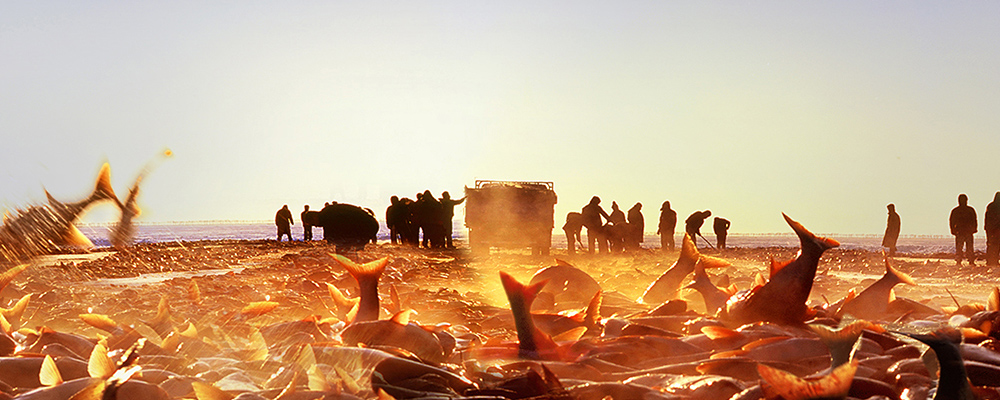During the War of Resistance Against Japan, the Japanese invaders, in order to encircle and suppress the Longbei Anti-Japanese armed forces, set up an observation station on the Volcano at the highest point of South Gelaqiu Volcano in Wudalianchi Scenic Area to spy on the activities of the anti-Japanese coalition forces in an attempt to control the Chaoyang Volcano base. Although certain restrictions were imposed on the activities of the Anti-Japanese Alliance, it could not stop the Longbei Anti-Japanese Guerrilla War from victory to victory.
Gelaqiu Volcano is an ancient volcano with the widest view and the highest geographical position in the westernmost part of the Wudalianchi volcano landscape. It is about 5 kilometers west from Yaoquan Volcano, and Crouching Tiger Volcano lies on the south side of Highway 1842. Turn right and go north for 5 kilometers, there is a high and one low, and a north and south volcano of Gelaqiu. Standing on the top of South Gelaqiu Volcano, 13 volcanoes to the southeast, the Great Plains to the northwest, and the Chaoyang Volcano dense forest camp of the Anti-Japanese War II era to the north, you have a panoramic view of the undulating Volcano and hills. According to historical records of World War II, during the Anti-Japanese War, this area used to be a virgin forest area from the volcanic area to the Chaoyang Volcano base area. It was under the cover of these forests, grasslands, and Volcano that the anti-Japanese guerrilla warfare was launched here. Today it has become a world tourist attraction, but the historical traces of that year still remain in the Volcano and rivers.
(1) More than 70 years ago when the war was raging, the Tianchi Volcano area of Gelaqiu was once a strategic location for the Japanese invaders, a stubborn fortress, and an isolated island in the torrent of the national war of resistance and a place for Japanese invaders. The strategic position here is extremely important. It is located in the hinterland of the anti-Japanese guerrilla area in the north of Longjiang, and the terrain is extremely dangerous. Using this as a channel, you can go from the Wudalianchi volcanic area to the west from the Nehe River to the north to the Nenjiang River. Coupled with the undulating Volcano and dense forests in the north, and the villages and towns in the plain area to the south, it has become a "boundary" zone between the Volcano area and the plain. It is also the throat connecting Dedu, Nehe and Nenjiang counties. More importantly, it is the most western traffic throat of the Northeast Anti-Union Third Route Army Command Headquarters in Chaoyang Volcano virgin forest area. In order to extinguish the anti-Japanese fire, the Japanese army stationed heavy soldiers as a fortress under the Gelaqiu Volcano, and set up an observation station on the commanding height of the South Gelaqiu Volcano. In order to prevent enemy agents from entering the Volcano, the Anti-Japanese Allied Forces also set up a secret liaison station at the foot of Tianchi Volcano (near Daqing Farm) to guard the Volcano pass. Therefore, every time the anti-Japanese coalition entered and exited the Throat Fortress from the Chaoyang Volcano camp, it had to go through a fierce battle from birth to death. Later, in order to avoid greater sacrifices, various methods of campaign wars were also adopted, but in the end it was inevitable to be detected by the enemy and paid a certain price. Therefore, the military secrets of the Japanese invaders on the Gelaqiu Volcano have never been revealed, even though they have been used many times, they have not been able to dispose of them. However, from this important channel, our party and the anti-Japanese coalition forces have been continuously transmitting various instructions from the North Manchuria Provincial Committee of the Communist Party of China and the headquarters of the Third Route Army, mobilizing and commanding the troops to carry out the anti-Japanese guerrilla war in the Longbei area until the The final victory of the War of Resistance.
(2) Among the generals who managed the Longbei anti-Japanese struggle, Wang Jun, the chief of staff of the three detachments, was the leader who had been active in the Wudalianchi volcano area for the longest time and commanded the most battles. Therefore, the Japanese army observed the mystery of our army's activities on the Gelaqiul Volcano, and it was not until he personally reached the top of the South Gelaqiul Volcano that he really solved this decades-old mystery.
In June 1986, 72-year-old Wang Jun was invited to attend a return visit symposium for veteran anti-union cadres. At the meeting, he, together with close comrades-in-arms Chen Lei, Wang Minggui and other anti-Japanese generals, reviewed the difficult journey through the Wudalianchi volcanic area that year. And sincerely express their deep feelings for the Volcano and rivers, the plants and the trees here, and the gratitude of the broad masses of people who have fought with them. Wang Jun never forgot the mysterious Gelaqiu Volcano. So on the second day after he arrived at the Chaoyang Volcano base, he dragged a wounded leg left by the war and decided to visit the Gelaqiu Tianchi in person.
When he and his escort drove to the foot of the volcano, they eagerly leaned on crutches, pushed away the support of the escort, and climbed to the top of the Volcano with firm will. He straightened his body, stood at the highest point of the southern wall of the crater, looked around, and finally stopped his gaze to the north, muttering: "The Gelaqiu Volcano where the Japanese army was entrenched during the Anti-Japanese War was impossible. It is now We own the world."
Then he looked at the distant Volcano and the green carpet-like fields for a long time, and suddenly said as if he had found the answer to the question: "It's really unobstructed! Standing on this highest point, even without the use of a telescope, in the past. Under dense forest conditions, based on the judgment of the flames and smoke in the far distance of the Volcano forest, according to the flying direction of a large number of Volcano birds, the activities of people in the Volcano can be more accurately inferred. If you use a telescope, it will be more accurate. No wonder we will be bombarded by the Japanese as long as we start from the base area whenever we have a military operation."
While resting on the top of the Volcano, General Wang told his escorts how he was always harassed by the Japanese and puppet troops when he passed through the passage under the Gelaqiu Volcano and entered and exited the base area. At the request of everyone, he detailed the battle story of the most difficult and dangerous years of the Anti-Japanese War, and Feng Zhigang, Wang Minggui and others, led a team into Beixing Town and Nehe County, and outsmarted Keshan. He described how to send army cadres to the border of Nehe County through the red western passage of Gelaqiu Volcano and form the Nehe Central County Committee of the Communist Party of China. Under the noses of Japanese invaders in the Wudalianchi area, the people in the volcanic area established the Anti-Japanese National Salvation Council and became the Beishan guerrilla. The logistics base of the team and the base area, Beishan is the volcanic area around Heilong Volcano and Huoshao Volcano. The Chaoyang Volcano Anti-Union Base Area is closely connected with the fate of the people in Beishan area. The people of Wudalianchi had already underwent the Gelaqiu military fortress in hard times. The traffic arteries became the big red channels to support and cover the Anti-Japanese Army and conduct guerrilla warfare with the Japanese and puppet forces.


